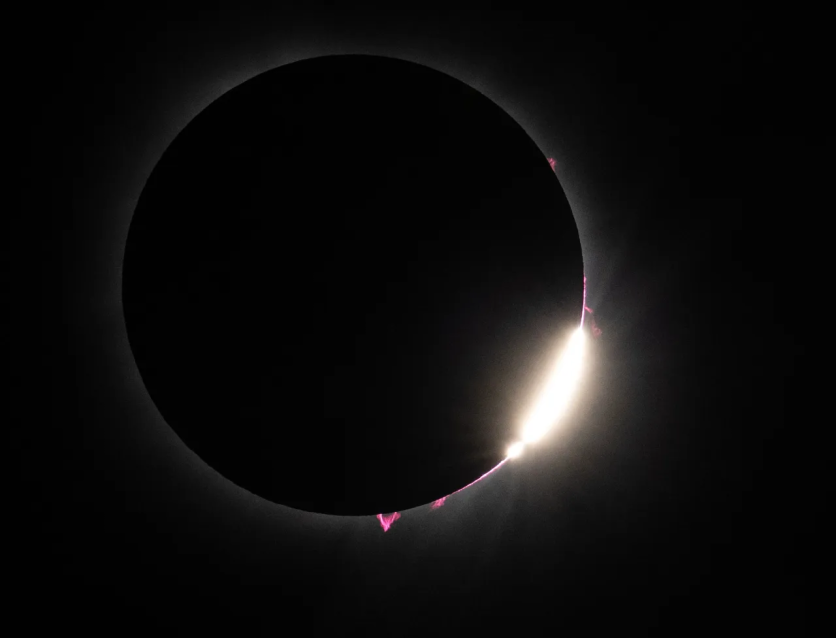NASA revisits the April 8 total solar eclipse with a stunning collection of images capturing the celestial spectacle as the Moon's shadow journeyed across North America.

How NASA Saw the April 8 Total Solar Eclipse
The sequence of images showcases the gradual transition as the Moon obscured the Sun, culminating in the ethereal display of the solar corona. Each frame immortalizes a moment of the eclipse's progression, allowing viewers to witness the celestial spectacle unfolding overhead.

Experiencing a total solar eclipse firsthand transcends mere observation; it's an immersive encounter with the cosmos. The gradual dimming of light gives way to a deep darkness, enveloping spectators in a surreal ambiance as the Sun's corona emerges.
Throughout history, observers have noted the peculiar behaviors of wildlife during eclipses. The Eclipse Soundscapes project, supported by NASA, gathered data on animal reactions, shedding light on the intricate interplay between celestial events and earthly ecosystems.
On April 8, crowds gathered at various vantage points along the eclipse's path, including NASA's designated "SunSpot" locations. Attendees engaged with experts, participated in educational activities, and eagerly awaited the celestial spectacle.
During this brief period of darkness, celestial wonders revealed themselves to the naked eye. Planets such as Venus and Jupiter gleamed brightly against the darkened sky, according to NASA.
There's Something Pink Around the Sun?
The eclipse also unveiled mesmerizing pink prominences emanating from the Sun, vast clouds of plasma suspended by magnetic forces. These celestial structures, many times larger than Earth, offered a rare spectacle visible without telescopic aid.

While terrestrial observers marveled at the eclipse's splendor, NASA's Solar Dynamics Observatory (SDO) and astronauts aboard the International Space Station provided unique perspectives from above. SDO's imagery captured the Sun's pre-totality state, offering a complementary view to ground-based observations.
Meanwhile, astronauts witnessed the Moon's shadow traversing Earth from their vantage point in space, a perspective unattainable from the ground.
The Earth Polychromatic Imaging Camera (EPIC) on the Deep Space Climate Observatory (DSCOVR) satellite captured striking views of Earth during the eclipse, offering a glimpse of the fleeting phenomenon from a million miles away.
Closer to home, NASA's WB-57 jets soared at 50,000 feet, extending the duration of scientific observations during the eclipse. These airborne platforms facilitated crucial research into the Sun's corona and Earth's atmosphere, contributing to our understanding of these complex systems.
Beyond its scientific significance, the eclipse served as a unifying experience, bringing communities together in shared awe and wonder.

ⓒ 2025 TECHTIMES.com All rights reserved. Do not reproduce without permission.




